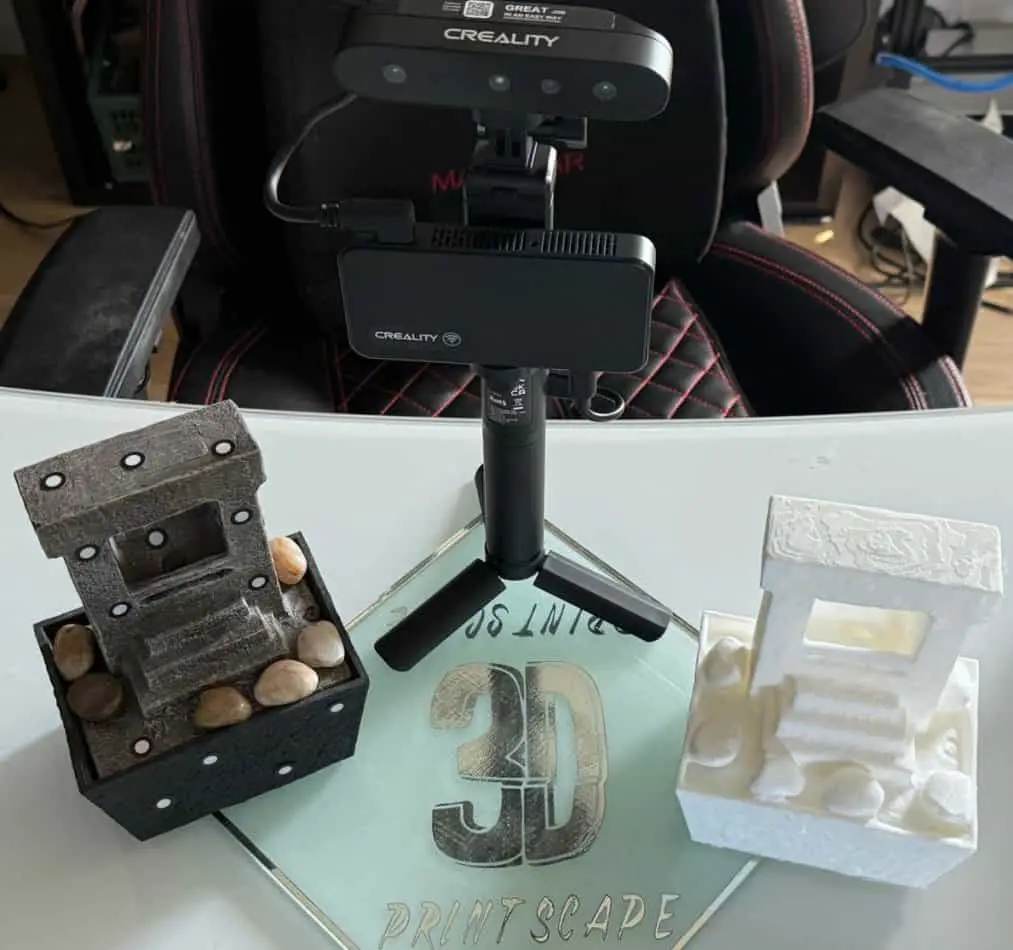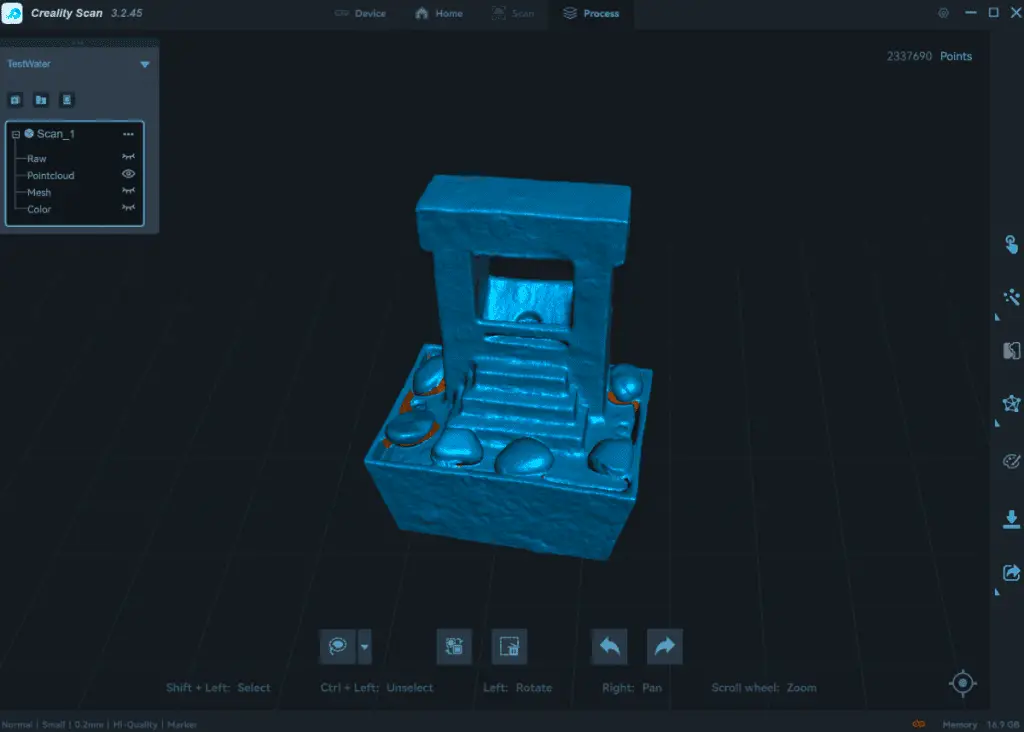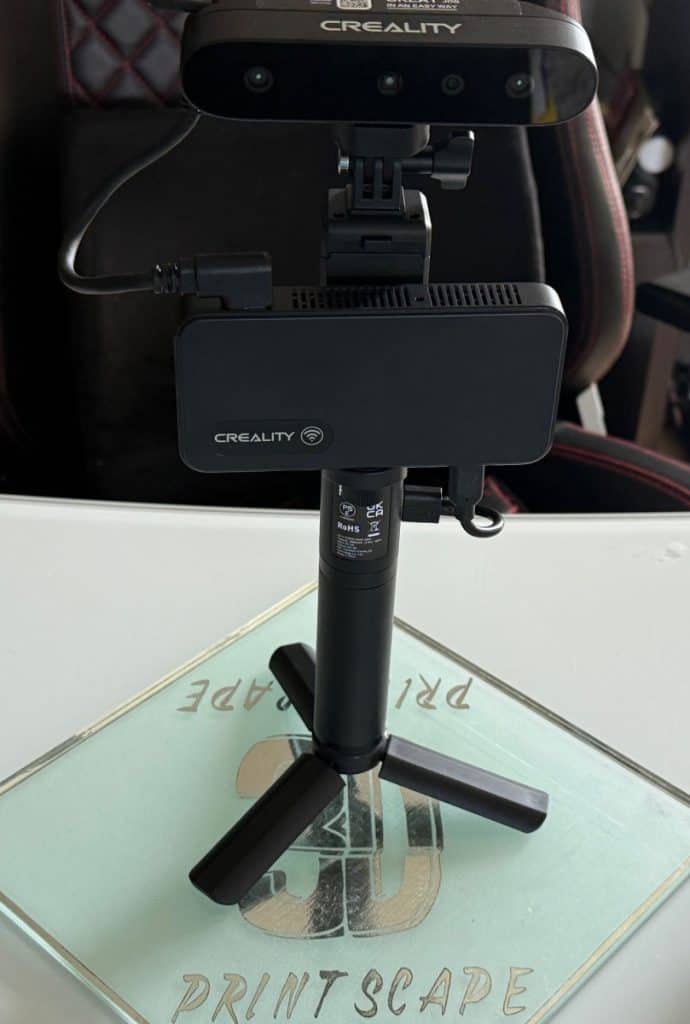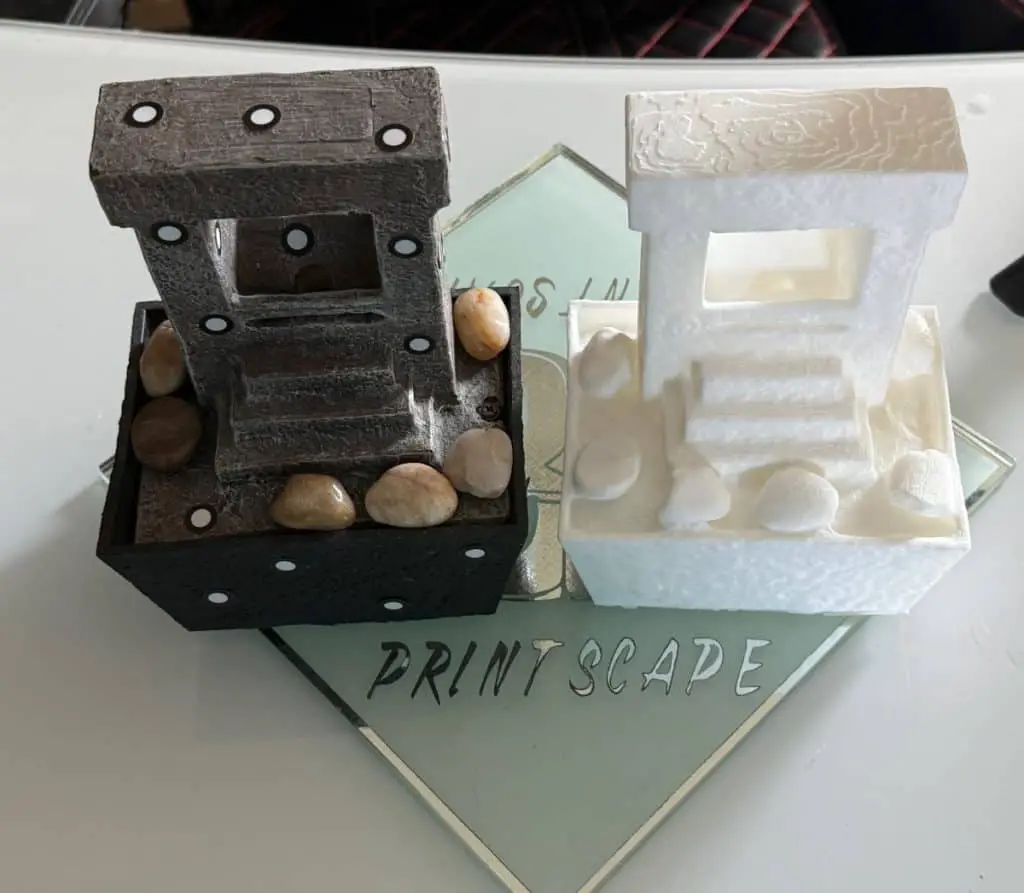The CR-Scan Ferret Pro is a handheld 3D scanner developed by Creality, a company well-known for its wide range of 3D printing solutions. The Ferret Pro is designed to cater to both hobbyists and professionals who require efficient, high-quality 3D scanning for various applications, from reverse engineering to digital archiving. This scanner stands out due to its affordability, ease of use, and compatibility with Creality’s ecosystem, including its CrealityScan software. This article dives into the technical features of the CR-Scan Ferret Pro, explores the different ways it can be utilized, and provides a comprehensive overview of its accompanying software, CrealityScan.

CR-Scan Ferret Pro: Features and Specifications
The CR-Scan Ferret Pro has made significant strides in the consumer-grade 3D scanning market by offering professional-grade features at a reasonable price. The device’s key highlights include its portability, high resolution, and multi-mode scanning capability. Below is a breakdown of its main features:
High-Resolution Scanning
One of the standout features of the CR-Scan Ferret Pro is its ability to capture detailed scans with high resolution. The device supports a resolution of up to 0.1 mm, which allows it to reproduce fine details and intricate geometries with accuracy. This is particularly useful for applications like quality inspection, reverse engineering, and creating highly detailed models for 3D printing.
Structured Light Technology
The CR-Scan Ferret Pro uses structured light technology to capture 3D scans. Structured light scanners work by projecting a pattern of light onto the object being scanned. The deformations of this pattern are then analyzed to create a precise 3D representation of the object. This method ensures higher accuracy and faster scanning compared to some other technologies, like photogrammetry.
Multi-Mode Scanning
The CR-Scan Ferret Pro offers several scanning modes tailored to different types of objects and conditions. It includes:
- Fixed Mode: Ideal for scanning small to medium-sized objects that can be placed on a rotating platform for a full 360-degree scan.
- Handheld Mode: Designed for scanning larger or irregularly shaped objects, this mode allows the user to move the scanner freely around the object.
- Face Mode: Optimized for scanning human faces and other organic shapes, with careful attention to the texture and smoothness of the surface.
- Body Mode: Specifically designed for full-body scans, ideal for making 3D portraits or avatar models.
These different modes make the CR-Scan Ferret Pro versatile and adaptable to a wide range of projects, whether you’re scanning small mechanical parts or large statues.
Lightweight and Portable Design
Portability is another major advantage of the CR-Scan Ferret Pro. Weighing in at less than 300 grams, the scanner is compact and easy to carry. This makes it suitable for fieldwork, where transporting heavier equipment would be impractical. Users can scan objects anywhere, whether in a studio, workshop, or on-site at a client’s location.
Wide Compatibility
The CR-Scan Ferret Pro is compatible with multiple operating systems, including Windows, macOS, and Android. This flexibility allows users to choose the platform that best fits their workflow. Furthermore, the scanner can be integrated into various 3D modeling software platforms, including popular ones like Blender, Rhino, and Autodesk Meshmixer.
Applications of the CR-Scan Ferret Pro
The CR-Scan Ferret Pro can be applied across a wide array of industries and projects due to its versatility, high-resolution capabilities, and ease of use. Here are some of the fields where this scanner shines:
3D Printing
One of the most common uses of the CR-Scan Ferret Pro is in conjunction with 3D printing. By creating precise 3D models of real-world objects, users can either replicate parts or create custom modifications. This is especially beneficial for hobbyists and professionals who need to reverse-engineer components or create prototypes quickly.
Reverse Engineering
For industries that require the reproduction of complex parts, the CR-Scan Ferret Pro serves as an excellent tool for reverse engineering. The scanner’s accuracy ensures that engineers can capture detailed scans of components and recreate them digitally for further modification or reproduction.
Digital Archiving and Cultural Heritage Preservation
The CR-Scan Ferret Pro is also useful for the preservation of cultural heritage. Museums and archeological teams can use this scanner to create 3D models of ancient artifacts, sculptures, and historical objects, ensuring that their details are preserved digitally for future generations.
Medical Applications
Another valuable application of the CR-Scan Ferret Pro is in the medical field. The scanner’s precision makes it useful for creating custom prosthetics, orthodontic appliances, and surgical planning models. Its ability to scan organic shapes accurately is critical for making these applications possible.
CrealityScan Software
A key component of the CR-Scan Ferret Pro ecosystem is the CrealityScan software, which is designed to process the data collected by the scanner and convert it into usable 3D models. The software is a vital part of the scanning workflow, allowing users to refine, optimize, and export their scans for further use in 3D modeling or printing software. Below is an overview of the main features of CrealityScan and how it enhances the scanning experience.

User-Friendly Interface
CrealityScan is known for its intuitive and user-friendly interface. The software caters to both beginners and experienced users, providing straightforward tools for setting up scans, previewing the captured data, and editing the results. Users are guided through the process of calibration, scanning, and post-processing with minimal technical jargon.
Automated Data Processing
One of the standout features of CrealityScan is its ability to automatically process the scanned data. Once the scan is complete, the software can automatically align the different data points, fill in gaps, and smooth surfaces to create a clean and optimized 3D model. This reduces the amount of manual post-processing required and makes the workflow more efficient.
Real-Time Preview
CrealityScan offers a real-time preview feature, which allows users to see the scan as it progresses. This feature is especially useful for ensuring that all areas of the object are captured correctly, minimizing the need for re-scanning. The real-time feedback provided by the software ensures that users can make adjustments on the fly to get the best possible results.
Model Editing Tools
In addition to capturing and processing scans, CrealityScan includes a range of tools for editing the 3D models. Users can trim, smooth, and refine the models directly within the software. Basic editing functions like mesh repair, noise reduction, and hole filling help prepare the model for 3D printing or further refinement in more advanced software.
Seamless Integration with 3D Printing Software
CrealityScan is designed to work seamlessly with Creality’s 3D printers and other popular 3D printing platforms. Once a model has been processed, it can be exported in standard file formats such as STL or OBJ, which can then be used in 3D printing software like Creality Slicer, Cura, or Simplify3D. This smooth integration between scanning and printing makes the CR-Scan Ferret Pro a powerful tool for 3D printing enthusiasts and professionals alike.
Cross-Platform Compatibility
CrealityScan is available for multiple operating systems, including Windows and macOS. This ensures that users can run the software on their preferred platform, making it versatile and accessible to a broader audience.



Initial Thoughts
The CR-Scan Ferret Pro is an impressive and budget-friendly 3D scanner, offering versatility and capability at a great price point. While there’s a bit of a learning curve with both the scanner and its software, I was able to produce a fully printable 3D model just a few hours after unboxing it. I’ll dive deeper into the process in a video going live this weekend.
One key point to mention is that I achieved significantly better results using the desktop software compared to the mobile app. While the mobile app is convenient for scanning larger objects or when portability is a priority, it lacks some of the advanced capture options available on the computer. If you do use the app for scanning, I highly recommend processing the results on your computer for the best outcome.
Related Articles
- CR-Scan Otter: A Highly Versatile 3D Scanning Solution
- What Is 3D Printer Engraving?
- 3D Printing vs. CNC Machining: What’s the Difference?
- How to Print a File from Thingiverse (The Easy Way!)
- Do 3D Printers Use a Lot of Power? (The Numbers Inside)
Make sure you check out our YouTube channel, and if you would like any additional details or have any questions, please leave a comment below or join us on Discord. If you liked this article and want to read others click here.
